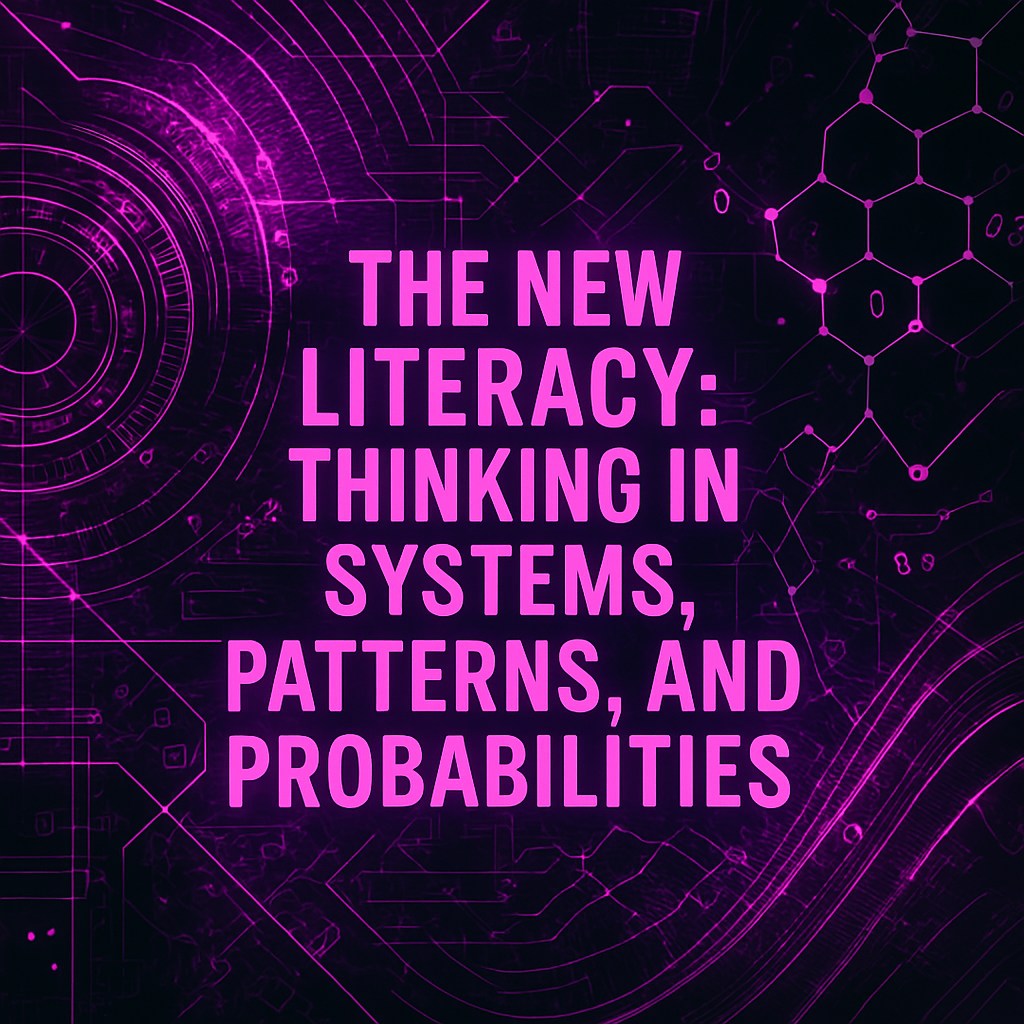The world is changing. Not just faster — differently. And traditional literacy is no longer enough to survive it.
In the 20th century, literacy meant the ability to read, write, and follow instructions. It served a society based on repetition, hierarchy, and compliance.
But the emerging world — fueled by AI, automation, decentralized systems, and information overload — rewards something else entirely.
We are now entering the age of a new kind of literacy. One where survival and influence are determined by your ability to think in systems, recognize patterns, and navigate probabilities.
System Thinking: Seeing the Invisible Engine Behind Events
System thinking is the ability to see the larger web of forces behind a single event. It’s understanding that what appears random or isolated often follows internal logic — feedback loops, incentives, constraints, and unseen pressures.
Example: Inflation isn’t just “prices going up.” It’s the result of energy supply chains, speculative markets, political narratives, and central banking behavior — each influencing and reinforcing the others.
When you think in systems, you stop asking, “What happened?” and start asking, “What’s driving this? Who benefits from this arrangement? What would happen if one piece changed?”
System thinkers don’t just react to headlines — they **anticipate trajectories**.
Pattern Recognition: A Superpower in a Chaotic Feed
We are bombarded by data — headlines, posts, prices, reactions, graphs, noise. But those who can track patterns over time — especially subtle, nonlinear ones — are the ones who stay grounded and gain insight.
Pattern thinkers notice the **shape** of things: cycles, delays, exponential curves, inflection points. They can predict human behavior, market shifts, meme trends, and technological adoption long before others react.
Example: If you’re watching an emerging AI tool not just for what it does now, but how its rate of improvement compounds — you’re not reacting, you’re tracking a pattern. That’s predictive literacy.
This is the mental skill that replaces memorization in the new world.
Probabilistic Thinking: Letting Go of Certainty, Gaining Clarity
Binary thinking — true or false, good or bad — is a holdover from a simpler world. But our environment now shifts too fast for certainty. In its place, we need **probabilistic reasoning**.
This means assigning likelihoods to outcomes. Thinking in ranges. Being comfortable with “probably,” “possibly,” or “this direction is more likely given these signals.”
Example: When you hear news about AI replacing jobs, ask: “What percent of jobs? Which sectors? Over what timeframe? With what assumptions?” The point isn’t to doubt everything — it’s to weigh scenarios with nuance.
In a world of uncertainty, probabilistic thinkers aren’t confused — they’re calibrated.
This Is the New Literacy
The future belongs to those who can read systems, not just sentences. Who can write probabilities, not just paragraphs. Who can feel the shape of a pattern the way others read a headline.
This is what schools won’t teach. What employers won’t reward. But what the future will increasingly demand.
If you can learn to think this way — to build conceptual maps instead of ideological cages — you will not only survive the future. You will design it.
AI Predictive Insight exists for this exact reason. To retool the way you read reality — and to help you think in ways most people are never shown.
This is your call to evolve your mind — not just to learn faster, but to see differently.

